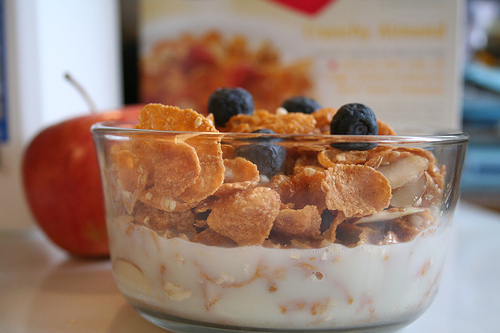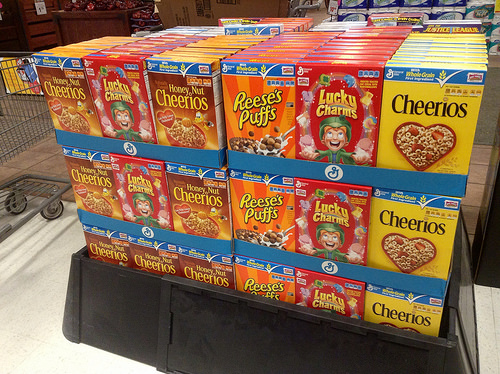 Breakfast cereal is a staple in many households and allows for a quick, easy meal in the morning. Grocery stores offer a never-ending supply of different flavors, shapes, colors and crunch factors. Many breakfast cereals are marketed as “healthy,” but beyond the colorful cardboard box and health claims, breakfast cereals are shown to be quite toxic to the body.
Breakfast cereal is a staple in many households and allows for a quick, easy meal in the morning. Grocery stores offer a never-ending supply of different flavors, shapes, colors and crunch factors. Many breakfast cereals are marketed as “healthy,” but beyond the colorful cardboard box and health claims, breakfast cereals are shown to be quite toxic to the body.
Food Processing: Then and Now
Humans have always processed their food. Traditional processing methods made food more digestible and allowed it to be preserved for times when food wasn’t readily available. Over the years, that harmless form of processing turned into what is predominantly done today: factory and industrial processing. This modern method can actually diminish the quality of the food, not make it more nutritious. The processing also uses sugar, artificial colors and flavors and toxic additives to enhance the appearance, taste and shelf life of the food items.
Why Your Breakfast Cereal is Toxic
When making breakfast cereal, grains go through an extrusion process that turns them into puffed wheat, oats and rice. The extrusion process treats the grains with high heat and pressure and destroys many of the nutrients
The breakfast cereal industry claims there are no differences between a natural grain of wheat and a grain that has been altered by the extrusion process, but research says otherwise.
In 1942, a cereal company conducted an experiment that never made its way to the public eye. Four sets of rats were given different diets. One group of rats ate whole wheat grains, water, synthetic vitamins and minerals and lived on this diet for a year. The second group ate puffed wheat, water and the synthetic vitamins and minerals. A third group, given water and white sugar, lived for about a month. The fourth group was given water and synthetic nutrients and they lived for two months. The surprising conclusion: the rats on the puffed wheat, water and nutrient solution diet lived for two weeks. This suggests there was something very toxic in the puffed wheat cereal.
In 1960, researchers conducted another experiment with 18 laboratory rats. One group received cornflakes and water, another group was given the cardboard box that the cereal came in and water and the third group received “rat chow” and water. The rats eating rat chow remained in good health. But the rats eating the cornflakes died before the rats eating the cardboard box!
Even though many breakfast cereals are labeled as “healthy,” due to the toxic extrusion process and addition of sugars and artificial ingredients, many of them do not live up to their health standards. Even brands like Kashi, Nature’s Path Organic, Cascadian Farm Organic, Back to Nature and Whole Foods’ 365 Every Day Value fall into this category as well.
If breakfast cereal is something you would like to start removing from your diet, we have a few quick and nourishing alternatives!
- Oatmeal. (Old-fashioned rolled oats or steel cut oats) Cook your oatmeal in unsweetened almond milk to make it a little thicker. You can add fresh berries, some banana or even a tablespoon of almond butter with cinnamon!
- Eggs. Try them scrambled, hard and soft-boiled, fried or in an omelet. Add some sautéed greens as well to make it even more nutrient dense.
- Yogurt. Plain Greek yogurt with berries makes a delicious breakfast. Try adding a little cinnamon or a dollop of honey if it’s a little too tart for you!

